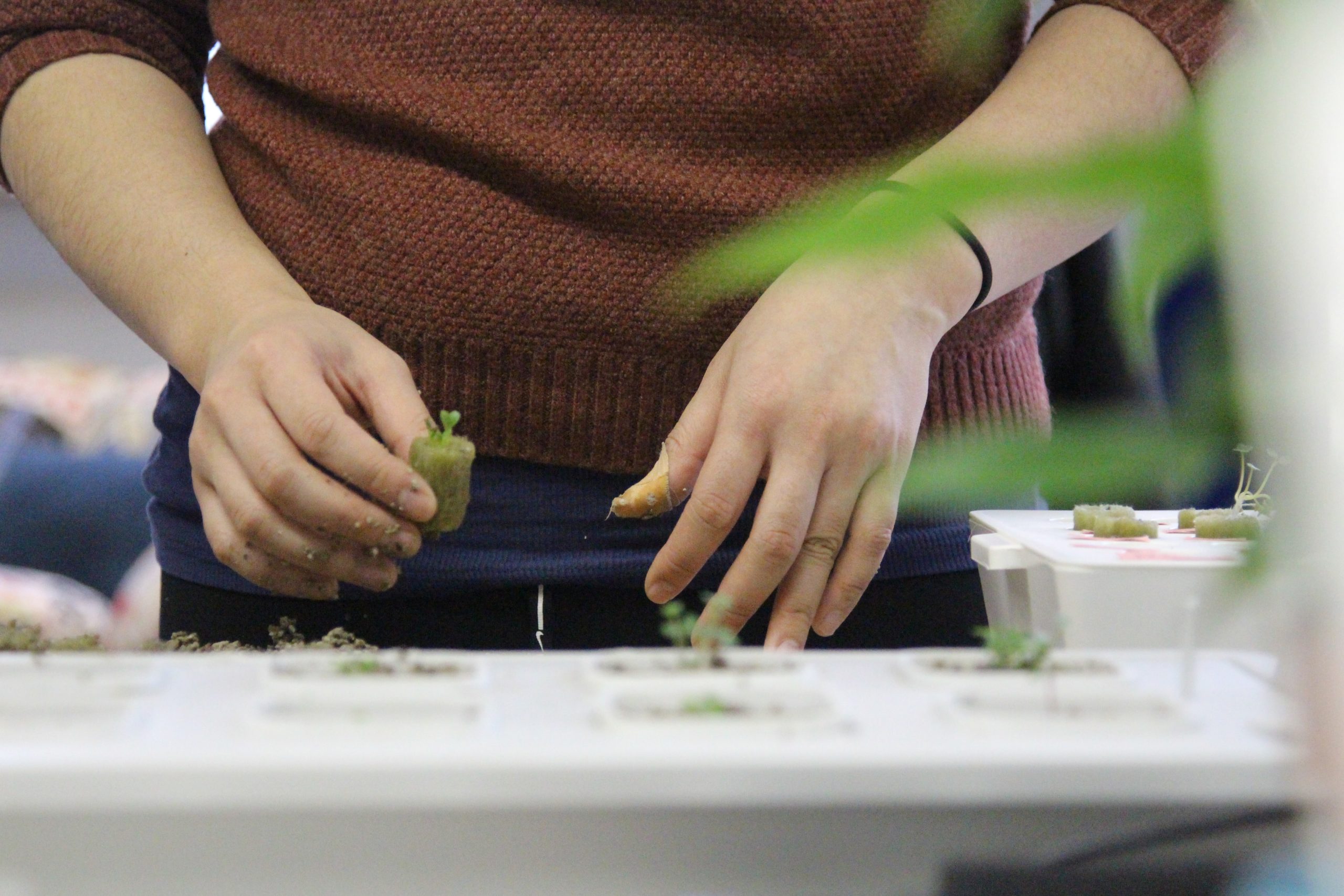Plants need soil, light, nutrients, and water to grow.
… or do they?
Enter: Hydroponics—a method of growing plants without soil.
What are the benefits of hydroponics?
Using just a dedicated container, water, nutrients, and light, you can grow plants all year long, sans soil.
Hydroponics allows you to grow your plants faster, with higher harvest rates. You also use less water than regular soil-based growing, making it a sustainable growing system for water conservation. And it saves you some bucks and time—no need to purchase soil or till your land plots.
And yet another reason to love hydroponic growing: no weeds!
Small-scale hydroponics is also a great growing option for those with no land space for a traditional outdoor garden, but have a sunny patio or balcony practically begging for plants.
What plants can you grow hydroponically?
When it comes to growing plants hydroponically in the summertime, most crops are great contenders. Think: tomatoes, cucumbers, and strawberries. Choose plant varieties that do well in containers.
Year-round, you can grow lettuce, herbs, kale, and leafy greens hydroponically.
When sourcing your seeds, look for those that are noted to do well with hydroponic systems.
How to Get Started with Small-Scale Hydroponics
While you can grow plants hydroponically indoors, you’ll likely need an artificial light, especially during the winter. As a beginner, growing outside during summertime is a great time to dip your toes into the waters of hydroponics (get it?) since you won’t have to worry about supplemental light or heat for your plant babies.
Here’s what you’ll need to get started with Small-Scale Hydroponics:
A Container Setup:
You’ll need a container that allows you to suspend the plants’ roots over the water and nutrients within the container. There are pre-made hydroponics containers that you can purchase, often with attached growing lights.
You can also build your own hydroponics setup.
Here are a few things to consider when building your container setup.
Pots & Material:
While we’re opting out of soil with hydroponics, your plant’s roots still need a support structure to cling to. Common substrate substitutions include perlite, hydroton, pumice, vermiculite, coconut coir, peat moss, and rockwool. Some people use sand, but this can cause issues with the sand compacting. For pots, mesh pots allow the roots to grow through them to reach the water below.
This chart gives you a pros and cons list of different substrates.
Filtered Water:
In most cases, tap water just won’t cut it. For optimal growing, your plants will need water with a pH balance of 6 – 6.5. pH testers for your water are very inexpensive and easy to use. Your local hardware or garden store will have solutions you can purchase to adjust the acidity of your water.
The best way to avoid water pH issues is to choose the appropriate nutrient mix (plant food) that will hold the pH consistently. Although I am not personally an expert on these products, B.C. Hydroponic Nutrients and Canna Bio are two recommended brands of nutrients for proper pH balance over time.
Light:
We can sub out soil but plants can’t live without light!
As mentioned above, summertime will be your best bet with growing hydroponically. However, you can grow plants hydroponically year-round; you’ll just need to supplement with artificial lighting, no matter how sunny your south-facing window may get.
Oxygen:
Plants can drown, too. In traditional soil-based growing, your plants are able to get oxygen in pockets of soil. In the hydroponics method, you’ll need to provide a gap of space in your container between the plant and the water to allow for aeration.
Once your seedlings have developed roots, you should provide space between the plants and the water and nutrients in the container below, keeping the roots only about a third of the way submerged.
Plant Food:
Without the benefits of nutrients naturally found in rich soil, your plants will need “food” added to the water base. You can find both liquid and dry fertilizers specifically designed for hydroponics online or (sometimes) at your local garden store.
As I mentioned earlier, the fertilizer or plant food is an important aspect of maintaining proper pH balance for hydroponic success—so choose wisely.
The University of Minnesota Extension provides extensive guidance here on starting and maintaining your small-scale hydroponics setup.
What are the downsides of hydroponics?
Nothing is perfect, and how fantastic the benefits of hydroponics, this growing method has its faults, too. For small-scale hydroponics, the cons are not as large as those who practice hydroponics on a large scale, using expensive equipment like artificial aeration.
For those practicing this on a small scale, your main concern will be waterborne diseases, including several water mold species, that spread much quicker than in traditional soil-based farming.
You can read more about the pros and cons of hydroponics here.


